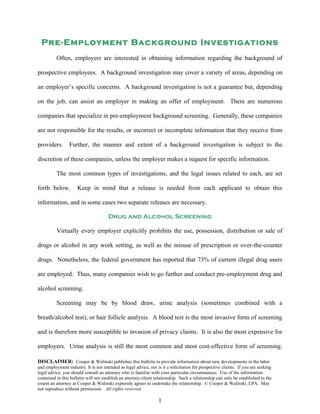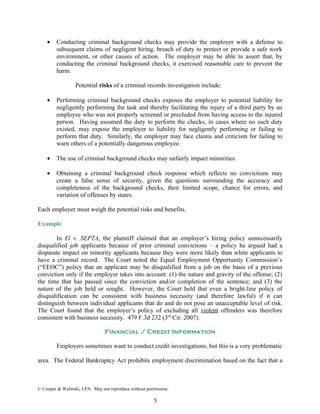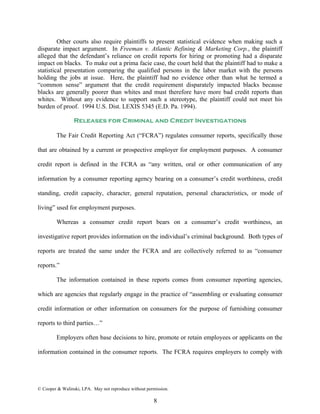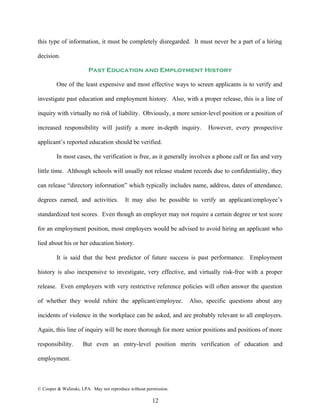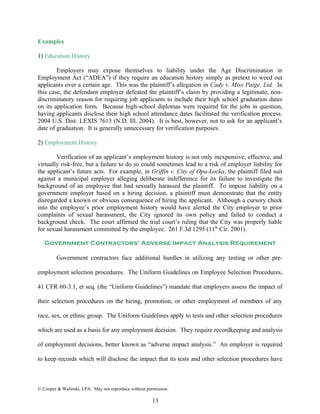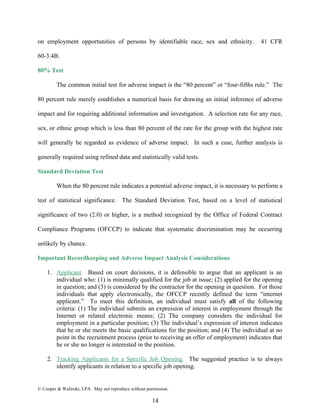This document discusses pre-employment background investigations that employers conduct, including drug/alcohol screening, criminal records checks, and other types of investigations. It notes that drug/alcohol screening is common and can be done through blood, urine, or hair tests, with urine being the most frequent method. Criminal records checks vary in scope from just the state to a full FBI records search, but employers must consider arrests separately from convictions due to bias. Overall, background checks aim to protect employers and customers but also require complying with laws around medical privacy and bias.
